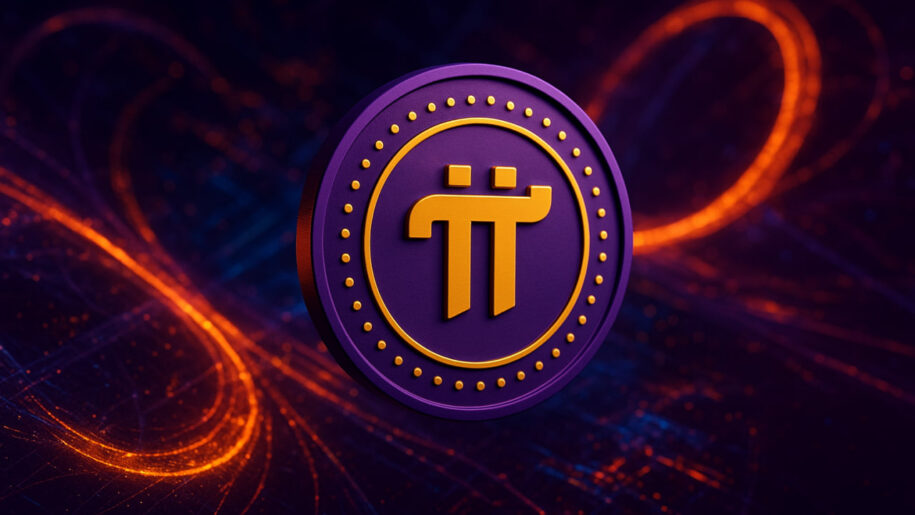1. The Origin Story: Mining for Everyone
Pi launched with a simple message: making mining accessible to ordinary people. Bitcoin’s model where expensive ASICs and specialized farms dominate left many excluded. Pi’s founders offered an alternative: a lightweight phone app where users (called “Pioneers”) tap once daily to record their participation and earn incremental PI tokens.
That simplicity resonated. Social sharing and referral incentives turned Pi into a viral network effect: users recruited friends, formed “security circles”, and took pride in accumulating PI without paying anything or running power-hungry equipment. Rather than compete over hash rate, participants were rewarded for social trust and daily engagement a model that blurred the lines between a tech product, a social app, and a cryptocurrency.
Gamification and community
Mining on Pi Network feels like joining a movement. The app’s UX emphasised badges, leaderboards, and social interaction. Early users formed regional communities, organised PiFest events, and built marketplace pilots that accepted PI for goods and services. For many, Pi was their first crypto experience approachable, low-risk, and immediate.
2. Mobile Mining: What It Is and Why It Spread
Mobile mining on Pi is not mining in the traditional proof-of-work sense. Instead, the network designed a consensus and distribution mechanism where everyday participation daily check-ins, forming security circles, and referrals determined reward rates. This created a radically inclusive distribution model:
- Low friction: no wallets, no capital, no specialized hardware
- Universal access: users on low-cost Android devices could participate
- Social incentives: referrals and security circles rewarded network growth and trust
The resulting community growth was staggering. Millions joined through word of mouth, social groups and local meetups. To many Pioneers, Pi represented a chance to own crypto without the steep financial or technical barrier typical of other projects.
3. The Paradox: Huge Community, No Exchange Price
By September 2025, Pi remained largely an enclosed economy. The main reasons behind this paradox were organisational and regulatory:
Controlled rollout
Pi’s leadership repeatedly emphasised a phased approach: build apps and on-chain infrastructure, implement strong KYC, and only then let coins freely circulate to avoid early speculative dumping. In principle, this protects early adopters from market chaos.
KYC and compliance
Pi’s requirement that every user verify their identity before migrating tokens to the open mainnet created a massive bottleneck. Millions submitted documents; many waited months. Identity verification is expensive and complex at scale especially for a project that reached tens of millions of users across diverse jurisdictions.
Preventing a rush to sell
Releasing billions of unverified PI onto exchanges could have led to a massive sell-off. By keeping tokens locked, Pi’s team aimed to ensure that listings when they eventually happen would reflect genuine utility rather than pure speculation.
However, critics argue these justifications stretched into years of delay, eroding trust. Attempts to trade PI unofficially IOUs and unauthorized listings created confusion and underlined how far the project was from meeting top-tier exchange standards.
4. Mainnet Status: Technical Reality vs Practical Access
Pi’s technical chronology matters for understanding its present position:
- Testnet (2019–2020): experimentation and early development
- Enclosed mainnet (2021): blockchain launched but access restricted a controlled environment
- Open mainnet announced (Feb 2025): plan to enable external connectivity and exchanges but in practice, KYC and migration limits kept most users out
As of September 2025, roughly 60 million users still mine daily within the app. Yet only about 16 million reportedly had fully activated mainnet wallets leaving tens of millions in a tentative state while they waited for KYC processing or clearer migration paths.
2019: Testnet launch
2021: Enclosed mainnet
2025: Open mainnet announced (practical access limited)
Timeline: Pi Network’s staged rollout and the gap between technical launches and practical access.
5. Real-World Use Cases: Small but Meaningful
Despite the closed economy, Pi has several live, limited uses that demonstrate how the token might function in micro-economies:
- Mobile top-ups and gift cards: some partner apps let users redeem PI for airtime or gift cards in specific regions.
- PiFest and merchant pilots: at community events merchants accept PI for food, apparel and services.
- Pi Browser apps: mini-apps, games and marketplaces inside Pi’s browser allow buying and selling with PI within the ecosystem.
- NFT marketplace: an internal Pi NFT market exists where users can mint and trade collectibles for PI, though adoption is currently limited.
These pilots are important because they provide early on-ramps for usage and merchant experience. Yet their scale remains small compared with mainstream payment rails and most transactions occur inside the app rather than the open internet.
6. The Psychology of Belief: Why Millions Keep Mining
Why do people continue to tap daily for a coin with no listed price? The reasons are partly economic but largely psychological and social:
Accessibility and low risk
Mining PI requires no money and no technical knowledge just a phone and a habit. For many, it’s low effort with a potentially huge upside, similar to holding a lottery ticket.
Community and identity
Pi fosters social belonging. Groups bond over referrals, regionally organised events, and shared optimism. The social rewards of participation reinforce continued engagement.
Speculative upside
Participants hope that once KYC and listings happen, early accumulation will pay off. The scarcity narrative ‘now is the golden age to accumulate’ motivates action despite uncertainty.
7. Criticisms and Risks
Pi’s model has attracted intense scrutiny. Key criticisms include:
KYC bottlenecks and privacy concerns
Large-scale identity verification is costly and privacy-sensitive. Millions have provided IDs to the platform; critics worry about data security, cross-border compliance and the implications if breaches occur.
Centralization
Although presented as a decentralizing project, Pi’s core team and infrastructure retained significant control during the closed rollout. Critics argue that the project looks more like a centralized fintech app than a decentralized cryptocurrency.
Referral mechanics
Mining bonuses tied to invitations resemble multi-level marketing incentives. Skeptics warn such systems can prioritize recruiting over building genuine utility.
Opaque tokenomics and auditing
Major exchanges rejected Pi listings in part due to concerns about auditability, supply transparency and token distribution. Without clear, independent audits, regulator and exchange skepticism persists.
Monetization before utility
Some users point to Pi’s early monetization channels such as advertising inside the app or merchandise sales as evidence the platform has monetized its user base before delivering full on-chain utility.
8. Exchange Rejections and the Binance Episode
One of the most public setbacks came when a major exchange ran a community poll indicating strong support for a Pi listing, only to later deny the listing on compliance grounds. The dispute crystallized community frustration and highlighted the gap between social demand and exchange due diligence.
Unauthorized or premature listings and IOUs further muddied the waters and prompted official warnings from the Pi team. For many Pioneers, the Binance episode symbolized an inflection point: mass adoption in users does not automatically translate into market acceptance by regulated trading platforms.
9. Tokenomics & Migration: How PI Might Enter the Open Market
The process of turning app balances into transferable tokens on an open mainnet depends on several technical and governance steps:
- KYC verification: verifying identities to prevent fraud, sybil attacks and regulatory issues
- Migrating balances: moving account balances from the app’s internal ledger to actual on-chain wallets
- Supply controls: establishing rules for circulating supply and vesting periods to avoid dumps
- Audit & transparency: third-party audits to reassure exchanges and regulators
Absent clear parameters on supply distribution and vesting, exchanges will be reluctant to list or will demand stringent conditions that could limit liquidity and market depth even if a listing occurs.
10. Governance and Decentralization Roadmap
Pi’s roadmap referred to in parts as protocol upgrades v19 through v23 includes initiatives aimed at improving decentralization, smart contract support and transaction performance. The team has signalled intentions to onboard community validators and deploy modular smart contracts to broaden developer capacity.
But decentralization is not just a technical upgrade; it requires governance changes: distributing validator power, setting on-chain decision processes, and exposing transparent code and audits. The extent to which Pi’s leadership cedes operational control will influence both community trust and regulator confidence.
11. Developer Ecosystem and DApp Potential
Pi hackathons and developer grants have seeded small apps: game prototypes, NFT marketplaces and utility tools inside the Pi Browser. Yet most DApps remain experimental and lack scale.
For Pi to evolve into a platform with meaningful economic activity, it needs:
- Robust developer tooling and documentation
- Interoperability standards to connect with other blockchains
- Payment rails and merchant integrations outside the Pi ecosystem
- Incentive structures that reward useful applications over speculative token churn
12. Scenario Analysis: Four Possible Futures
Given the uncertainties, four broad scenarios capture Pi’s plausible futures. These are illustrative, not predictions designed to help readers understand stakes and tradeoffs.
Scenario A: Breakthrough (Wide Listing & Growth)
KYC scales, independent audits pass, and exchanges list PI with adequate safeguards (vesting, etc.). Developers scale apps, merchants accept PI, and the community bootstraps localized economies. PI gains some market value and becomes a recognized, if niche, crypto economy.
Scenario B: Niche Community Token
PI never reaches major exchange liquidity but stays useful inside its ecosystem. Local merchants, events and DApps accept PI, creating a closed but vibrant barter-like economy. The token’s global market relevance remains limited.
Scenario C: Slow Decline
Continued delays, privacy scares or developer fatigue reduce active users. Without listings or meaningful apps, the network’s activity dwindles and the token becomes a legacy experiment.
Scenario D: Regulatory/Technical Failure
Severe regulatory action (e.g., cross-border data concerns) or a major security incident could collapse trust quickly, leading to reputational and legal consequences and possibly a forced wind-down of operations.
13. What Would Success Look Like?
Success for Pi would combine technical, regulatory and community milestones:
- High-assurance KYC completed for the majority of active users without large privacy incidents
- Independent audits that clarify supply, distribution and vesting schedules
- One or more reputable exchanges listing PI under transparent conditions
- Meaningful merchant adoption and user spending beyond novelty purchases
- Vibrant developer ecosystem with DApps that deliver real utility and revenue for users
Only when several of these boxes are ticked would Pi transition from a promising community experiment into a functioning digital economy with sustained external value.
14. Practical Advice for Pi Pioneers and Observers
For users holding PI or participating in the ecosystem, the following pragmatic steps can reduce risk and prepare for any outcome:
- Document your KYC status: keep evidence of identity verification and submissions in case of disputes.
- Record wallet addresses: once mainnet wallets are activated, keep careful backups and use hardware security where possible.
- Limit exposure: avoid investing capital into speculative Pi-related schemes that promise guaranteed returns.
- Support transparency: ask for third-party audits, regular progress reports and public procurement data for major contracts.
- Diversify skills: developers and entrepreneurs should learn cross-chain tooling to keep their work portable beyond Pi.
15. Comparative Context: Lessons From Other Projects
History offers examples of projects that overcame early limitations, and others that faded despite strong communities. Key lessons include:
- Transparency matters: clear audits and open governance build exchange and regulator trust.
- Utility precedes value: networks with real payments, recurring use-cases and merchant adoption have more durable markets.
- Data privacy is critical: collecting KYC at scale requires impeccable security and legal compliance across jurisdictions.
Pi’s uniqueness — extreme user growth without market access — makes direct comparisons imperfect. Still, the underlying lesson is universal: community alone is insufficient without credible infrastructure, transparent economics and regulatory alignment.
16. Upcoming Upgrades and Roadmap Highlights
The Pi Core Team has signalled areas of technical work that could materially change prospects:
- Scaling KYC: community validators and AI tools to speed identity verification.
- Protocol v23: modular smart contract support and enhancements to decentralization.
- Developer outreach: hackathons, grants and Pi Browser improvements to spur DApp creation.
- Gradual open-network access: phased external connectivity to exchanges with compliance guardrails.
Each upgrade reduces certain risks but introduces new challenges notably how to balance speed with security and how to demonstrate credibility to skeptical market intermediaries.
17. Visualising Pi’s Position
Table — Snapshot (September 2025)
| Metric | Value / Status |
|---|---|
| Launch date | March 14, 2019 |
| Reported active miners | ~60 million |
| Estimated total signups | 100 million+ (est.) |
| Mainnet wallets activated | ~16 million |
| Major exchange listings | four (official) |
| Primary friction | KYC bottlenecks, compliance & centralization concerns |













https://t.me/battle_games_com_bot/start?startapp=frndId1891914791
🔥10$ Signup
Hey! Have you missed NOT or Hamster Kombat yet? Then don’t miss BATTLE BULLS – a free PLAY-2-EARN mobile game!
⚡️ In this game, you can earn in-game euros and convert them into REAL tokens after the September AIRDROP!
#Pi #Sidra #Airdrop #Network